BEFORE THE SMARTPHONE, THERE WERE ASTROLABES AND MAPS
Learn more about medieval technology
Make your own astrolabe
An astrolabe is a tool for measuring and calculating in widespread use from the 6th century. The astrolabe was popular throughout the Middle Ages for a variety of uses based on the measurements of planets and stars: calculating time of day, predicting sunrise and sunset, measuring distance or the height of objects, and also for navigation. The astrolabe was a feat of the incredible scientific and astrological knowlege of the medieval Islamic world. It was only later imported to the Byzantine Empire and, through Al'Andalus (Islamic Spain) to medieval Western Europe.
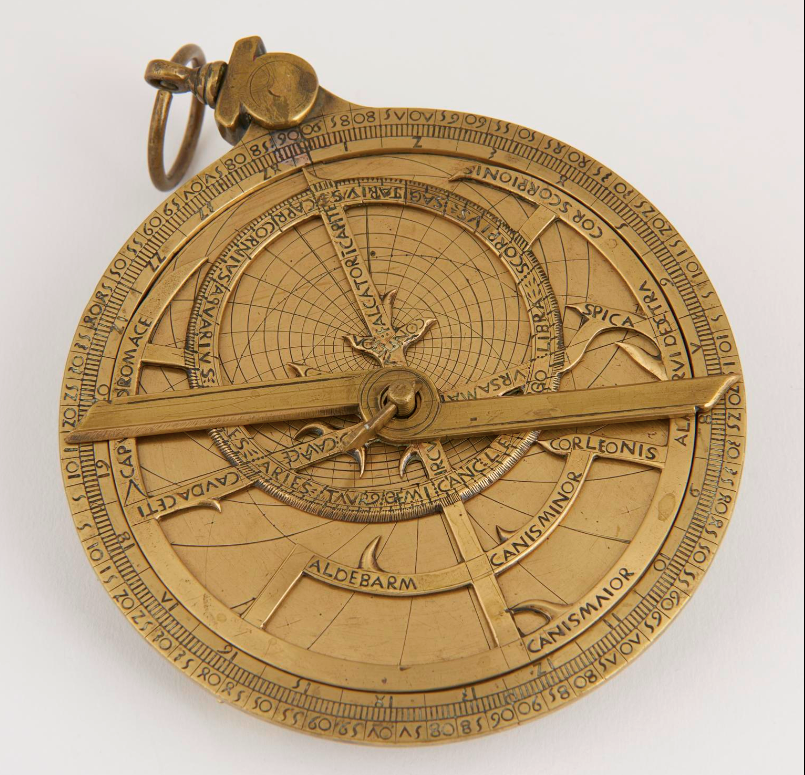
Astrolabes are fascinating objects that testify to the exchange of scientific knowledge across languages and cultures in the premodern world. For just one example, click here to read about the Verona Astrolabe, which has inscriptions in both Arabic and Hebrew, added over time by various users.
Make your own Astrolabe!
Visit astrolabeproject.com to customize an astrolabe for your latitude, or download our files here and print them at home.
- Mater/plate front (PDF)
- Mater/plate back (PDF)
- Rete (PDF)
Learn how to use your astrolabe
How did we make this?
We made medieval technology with modern makerspace machines.
Go on a medieval pilgrimage
Astrolabes provided the tools for navigation. Maps provided medieval people from China to England with a way to imagine the world around them.
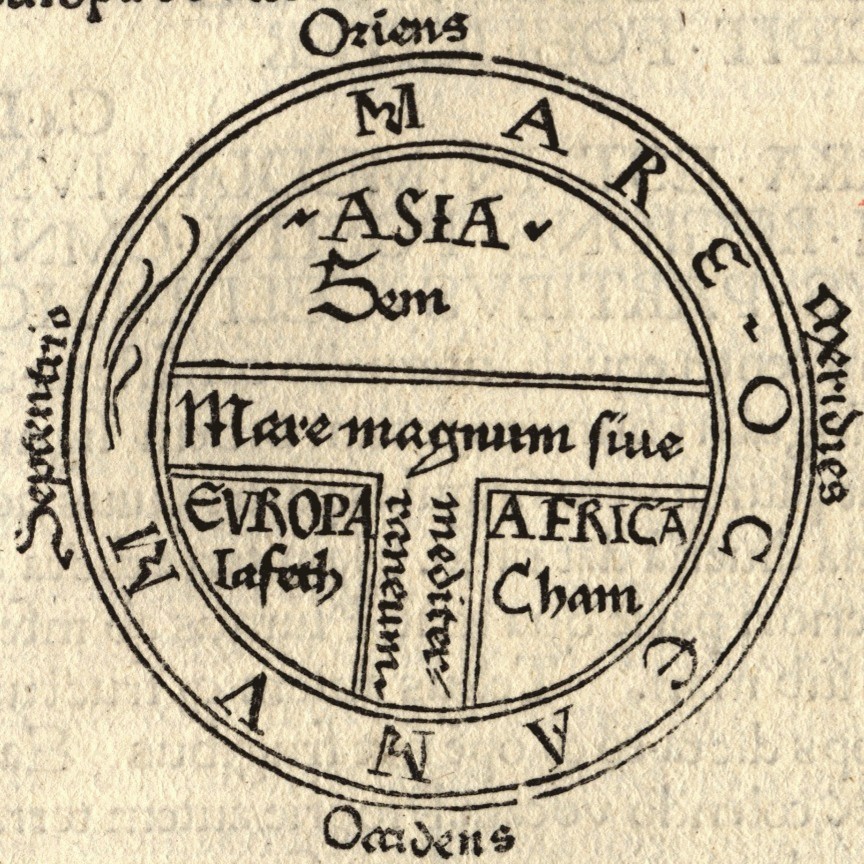
The T-O map above represents the Medieval Mediterranean world as it was described by Isidore of Seville in his early medieval Etymologies (an encyclopedia of word origins from the 7th century; this version is from Harley manuscript #2600 at the British Library). Asia was above the crossbar of the "T"). Europe was on the bottom left of the map with Africa on the bottom right of the map. Examples of the T-O map can be found between the 6th century and the 16th century all over the medieval Mediterranean, including in the works of scholars like 14th century historian ibn al-Wardi (UPenn LJS 495), whose atlas is more detailed but still hews to the T-O shape.
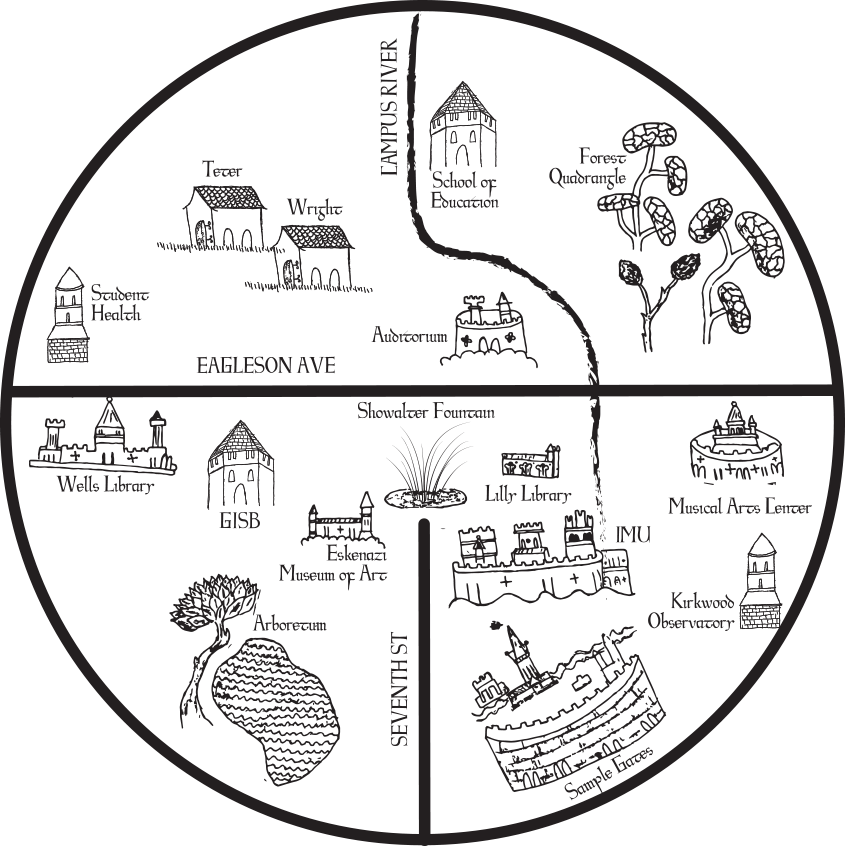
You get to use a T-O map of IUB's campus (illustrated by Emily Clark) to go on a "pilgrimage" route that connects IU to our global past.
Astrolabes and Books
The Book Lab initiated this project for two reasons:
First, we believe in hands-on making and hands-on learning! We are excited to bring you astrolabe models that you can try for yourself at one of several eclipse related events. You can also make your own! See below.
Second, astrolabes and books have a long history. In addition to many medieval texts about astrology and astrolabes--including a treatise by Geoffrey Chaucer--astrolabes can sometimes be found inside of books. Astrolabes are incorporated into early books as volvelles, a kind of moving part within a book consisting of rings of parchment that can manipulate just as a metal astrolabe, by rotation.
Below are some examples of parchment astrolabe volvelles in medieval books, and an image from a handwritten book transmitting two Arabic treatises on the astrolabe, one from Nasir al-Din al-Tusi (1201-1274) and another by Abdal Ali ibn Muhammad ibn Husayn Birjandi (d. 1528).
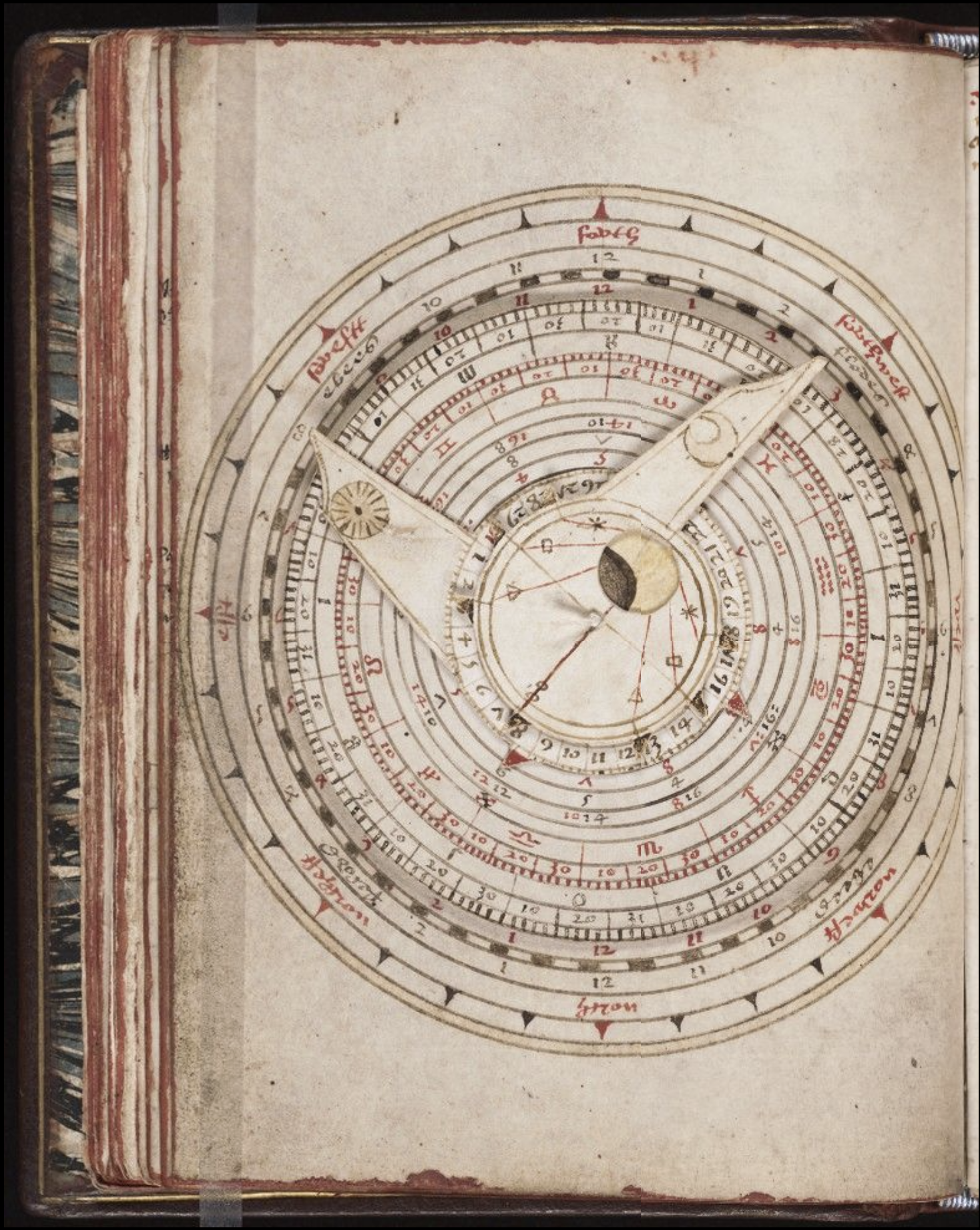
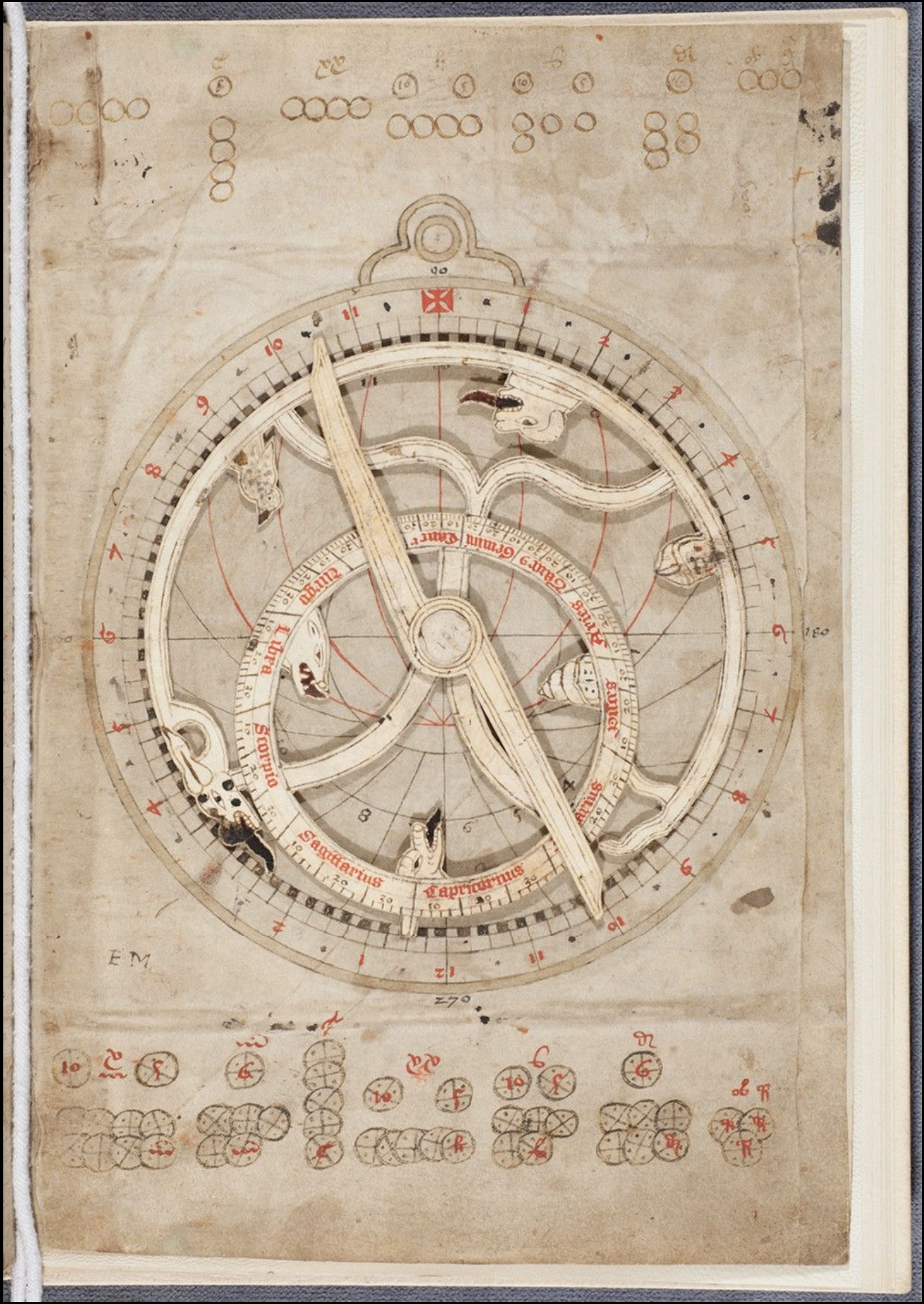
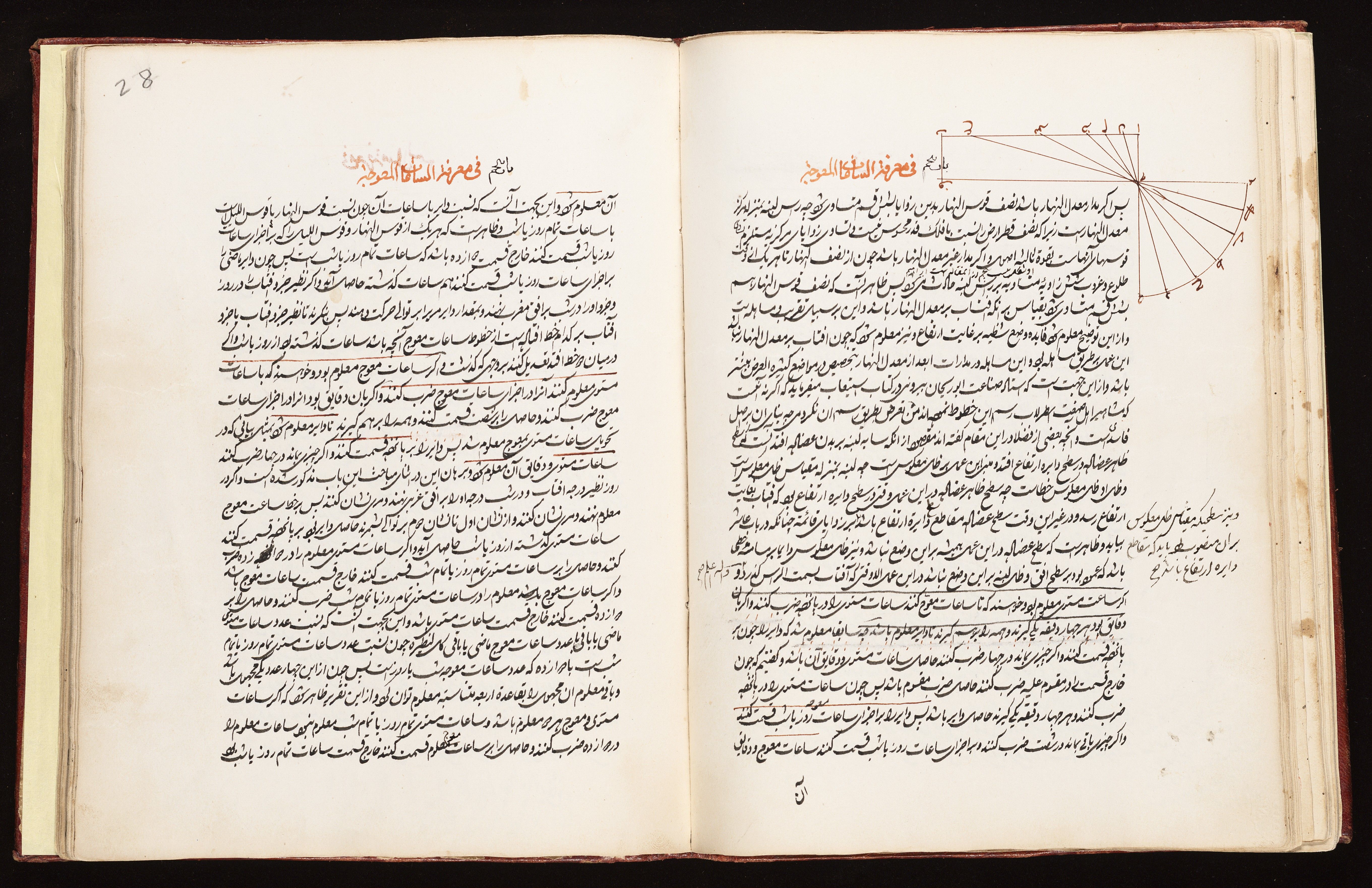
How to use an astrolabe
Make, print, and learn to use your own astrolabe!
If you'd like to make an astrolabe for another latitude, you can print your own!
Visit astrolabeproject.com to customize an astrolabe for your latitude, or download our files for Bloomington,IN here and print them at home.
- Mater/plate front (PDF)
- Mater/plate back (PDF)
- Rete (PDF)
Find our worksheet here for ideas and instructions for how to use your astrolabe.

